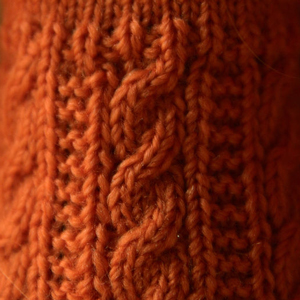How to Protect Your Winter Woolens From Clothes Moths
By Chris Williams on April 9, 2013.

Question
Now that the weather is finally warming up, I am getting ready to store my wool sweaters and other clothes, and a few blankets, until next winter. What should I do to make sure they don’t get infested by moths? Are moth balls a good idea?
Answer
Woolens and wool blend fabrics can be attacked by several different kinds of pests. The two that are the most serious and do the most damage are the clothes moths (there are two types) and dermestid beetles (there are several, including the carpet beetles).
Clean Everything
The most important thing you can do is to make sure all your woolens are dry cleaned or laundered before you store them. Take them to the cleaners even if they look clean. Clean clothes and blankets are less likely to be attacked by clothes moths or dermestid beetles than items that are even slightly soiled with perspiration, food stains, or other organic spills. Dry cleaning also kills any clothes moths or their eggs that are already present. You can ask your dry cleaner to treat your woolens with a protectant but if the items are to be stored for more than a few months, the mothproofing will need to be repeated.
Use the Right Storage Container
Don’t just place your clothes in a cardboard box and stick them in the attic or basement. Choose an air-tight container with a tight-fitting lid. You want to keep adult moths and beetles from getting inside to lay eggs. Large zip-lock plastic bags are a good choice, as are plastic tubs or storage bins with locking lids. If you prefer to hang items, use zippered garment bags.
New research has disclosed that even the old standby, a cedar chest, doesn’t protect clothes or blankets from fabric pests. Cedar chests or cedar-lined closets that are more than a couple of years old don’t have any repellency left against adult clothes moths or other fabric pests. If the cedar chest is tightly constructed, it might make a good storage container for your woolens, but don’t count on the cedar to repel moths.
Should You Use Moth Balls?
Some experts feel that having clean fabrics and a tight storage container are the most important factors, and that chemicals are not really necessary. Besides, it’s so hard to get that moth ball smell out afterwards. Most people that use moth balls and moth flakes, do so incorrectly. These materials are toxic to clothes pests but are only effective if used in sufficient amounts (read the label) and if used in an airtight container. If you add moth balls or flakes to your storage containers, be careful to keep the containers closed and away from children and pets. Don’t place these products in direct contact with plastic buttons, hangers, or garment bags since the chemicals may soften and melt some plastics.
Where you store your items is important, too. Neither attics nor basements are good choices. A place that is dark, dry, and cool is a good choice. A closet or even a storage area under a stairway works. Just be sure the area itself is clean and well vacuumed.
Woolen items that are packed away for long-term storage are the most likely to become infested, even if clean. Periodically remove these items from storage, or from your cedar chest, and brush them out, especially along seams and in folds and pockets. Brushing destroys eggs and exposes larvae. Then, give the items an airing in the sun before repacking them.
Photo credit: betsyjean79 / Foter.com / CC BY-NC-SA